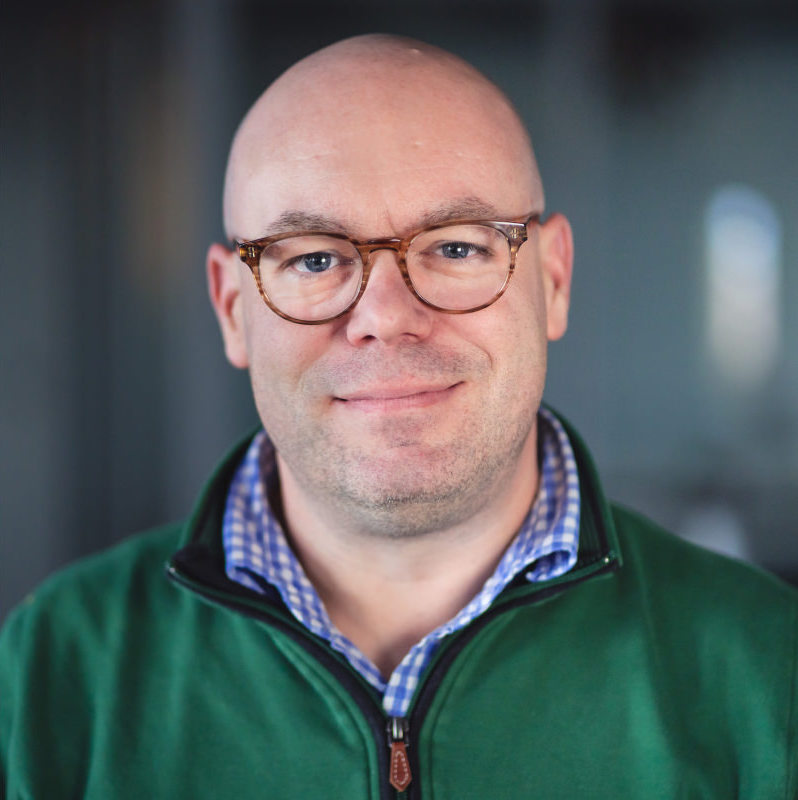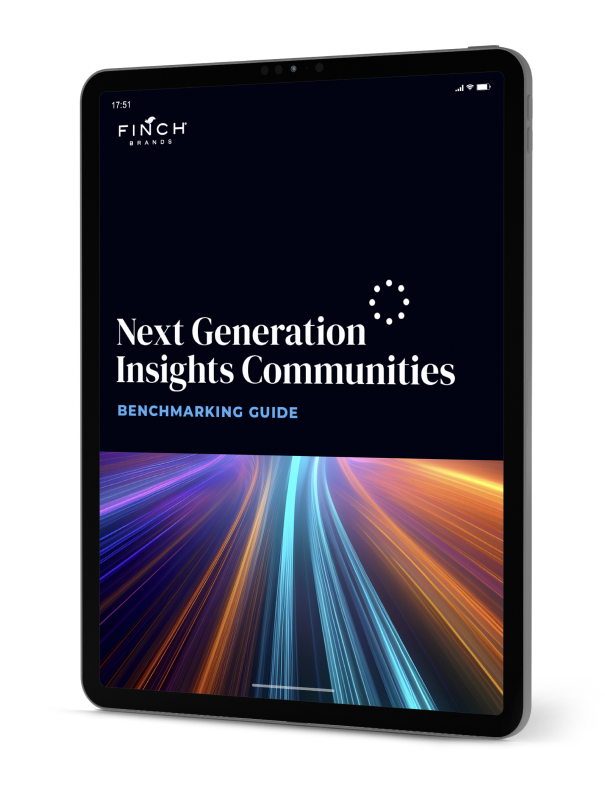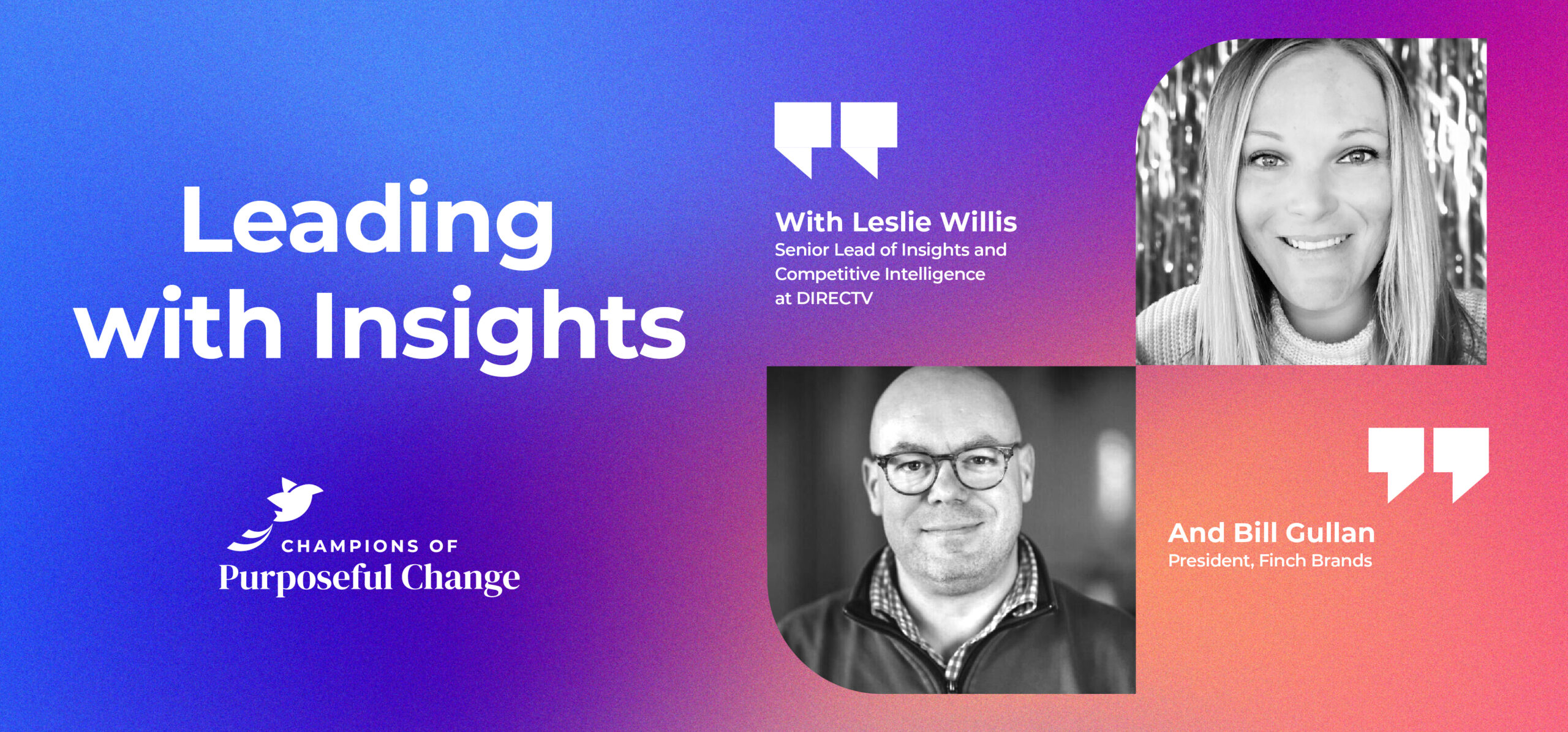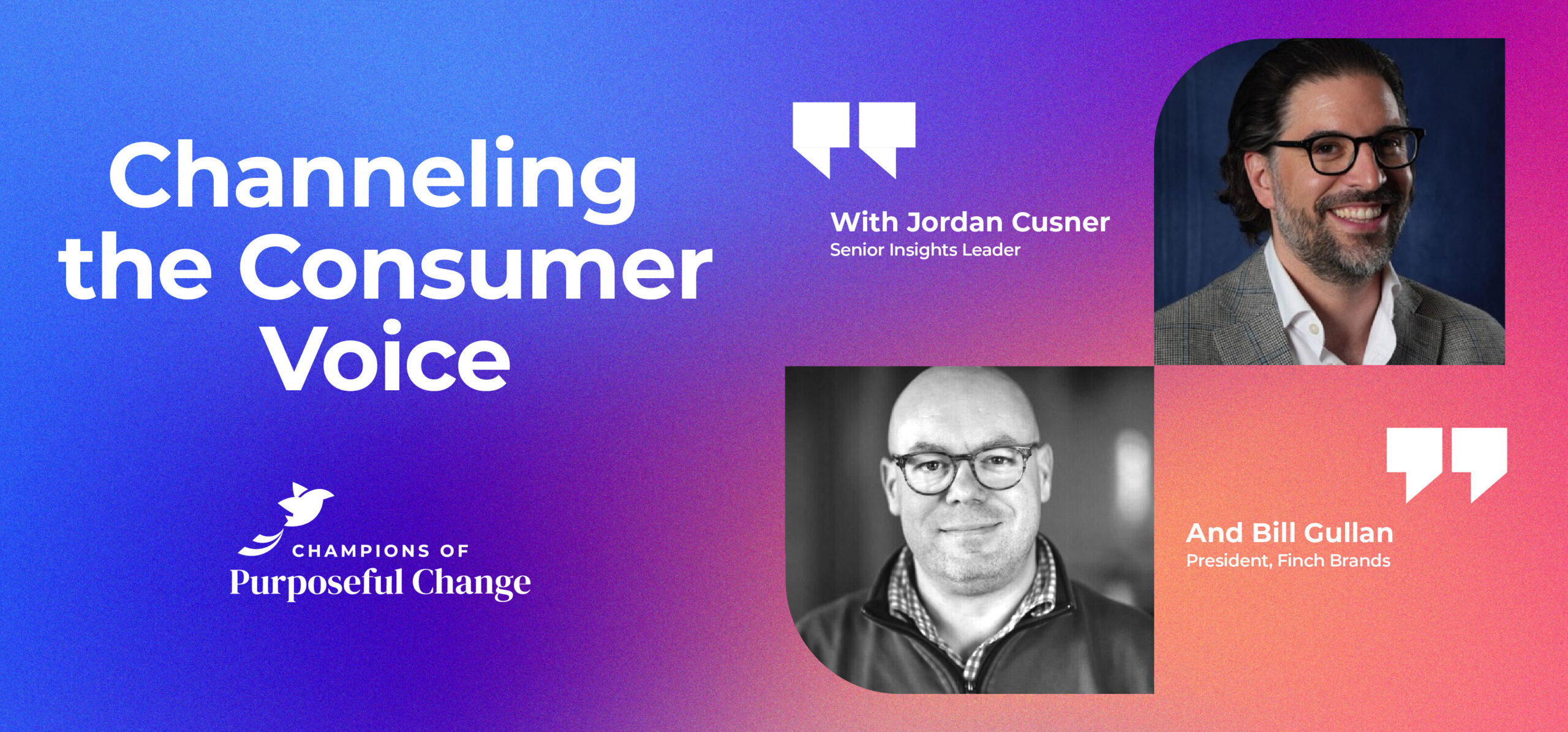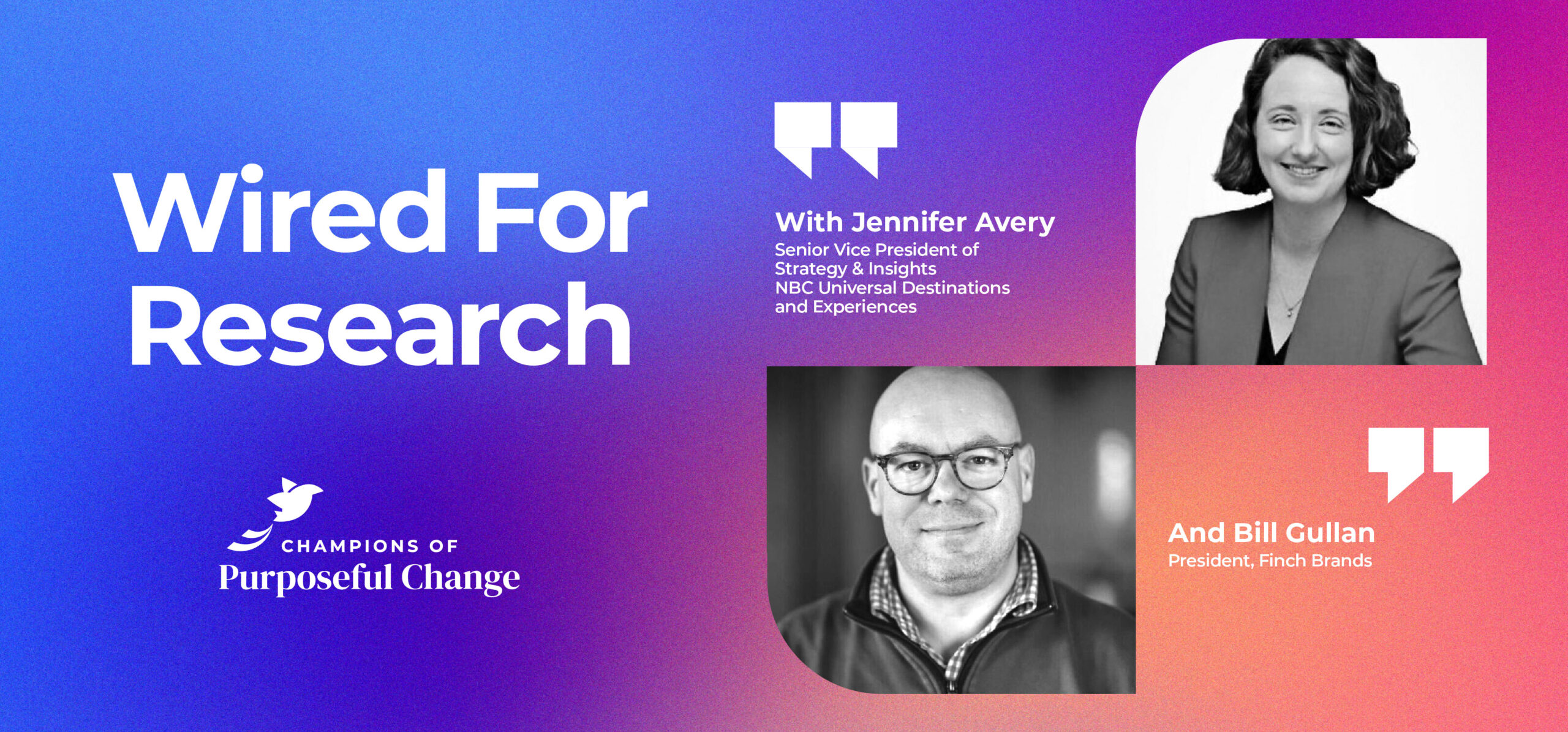Listen Up! Audio Insights with Idil Cakim of Audacy
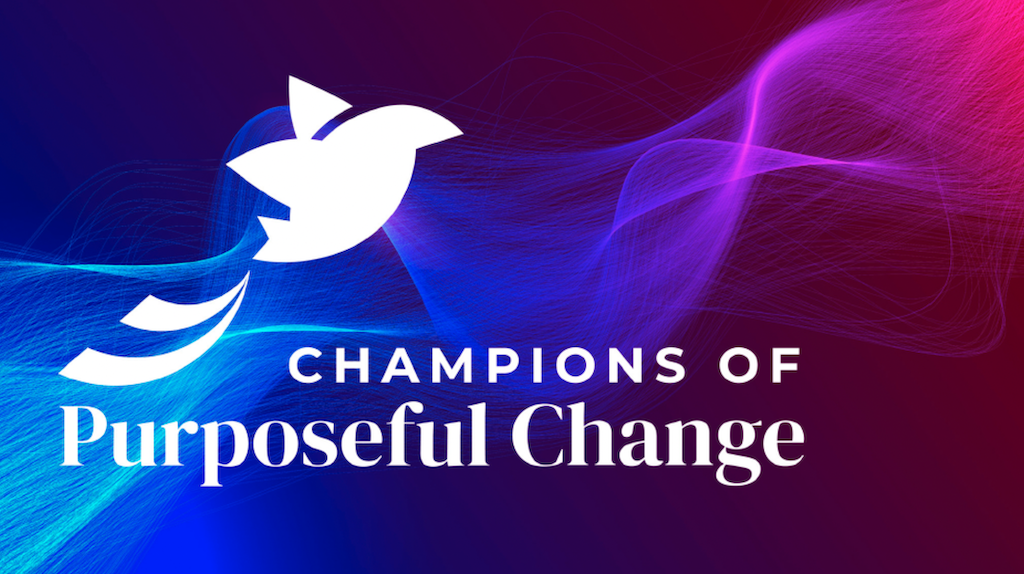
Join us as Idil Cakim, SVP of Insights at Audacy, takes us through her career journey and into her present role – which blends the traditional resonance of audio with progressive formats such as podcasting.
Bill Gullan:
Greetings one and all. This is Champions of Purposeful Change. I’m Bill Gullan, president of Finch Brands. Today we bring you Idil Cakim, who is senior vice president of insights at Audacy. As she will detail fascinating career in a variety of places, starting with a really compelling academic interest story all the way through into what is a cool company, which as we discuss deals with a lot of progressive media topics, podcasts and streaming, but also the traditional and influential and deeply relevant in texture, just world of audio, radio and other traditional elements that have been part of our consumption and our economy for many, many years. So you’ll enjoy hearing from Idil. Enjoy. So excited today to have Idil Cakim with us, who is the senior vice president of research and insights at Audacy. Thank you so much for spending some time.
Idil Cakim:
Absolutely. Thanks for having me.
Bill Gullan:
Oh, it is absolutely our pleasure and can’t wait to hear about a lot of different things related to research and your role. And let’s start, if you don’t mind, where we typically do, and you have such an interesting background and we’d love to hear a bit about your journey and what awakened your passion for this world and some of the stops along the way, if you wouldn’t mind.
Idil Cakim:
Yeah, I think I was just a little kid being interested in the act of discovery because I always wanted to become an archeologist.
Bill Gullan:
Oh, interesting.
Idil Cakim:
Then I went to the school, with a fantastic archeology department, didn’t even take one class because I was so intrigued and pulled into this one other class called Society, Culture and Individual. And that’s literally how it all started. It was a sociology class and we had to do our own study, mini scale study. And it was so torturous that I remember still suffering through this whole idea of designing my own study, finding my own sample, testing my own hypotheses, and finding the literature for it, et cetera. And I was so encouraged by the feedback that I got that I stayed with it. But I think this notion of, let me see what I can find out that the common eye cannot see has always been with me. And I’ve always had a knack for seeing things that others can’t see or putting pieces of the puzzle in a bit of a different way. And that flourished into a career in insights.
Bill Gullan:
Amazing. And so you were an undergrad at Bryn Mawr. A, near my house. B, very liberal artsy, like me.
Idil Cakim:
Yes.
Bill Gullan:
And you fell in love with sociology. Do you remember what your topic was for that? Are you able to share?
Idil Cakim:
I do. I think it was gender variations in something. Of course, being at Bryn Mawr, you’re always solving for some deep social problem. Gender variations. And I remember gathering sample from, okay, I’m a freshman in college, so I’m gathering sample from high school students, so that’s high school. And I picked three different schools I think. And my mom, I remember had delayed my fieldwork because she thought it could be done in a day, which is what sometimes our clients think. I remember the whole debacle. But the joke, going back to the act of discovery, the joke was that if you had done that kind of work, you might as well go ahead and major, finish the major because it was so critical in knowing your question, finding the literature, going beyond literature, putting it into a test bed, pressure testing your ideas and seeing if they hold true or not.
Bill Gullan:
Yeah. Fascinating. And a lot for an undergrad, even one as-
Idil Cakim:
Too much.
Bill Gullan:
Yeah. Even one with the credentials that you and your classmates had. That’s a lot. But what a great learning experience. And so-
Idil Cakim:
Yeah, I still remember Judy Porter [inaudible 00:04:50], amazing Sociology professor.
Bill Gullan:
Cool, cool. So you come out of your undergrad and tell us about the early moves you made and the journey that takes you to where you are today within your professional career.
Idil Cakim:
And if you’re near Philadelphia area, you’re going to enjoy the second reference. Then I went to the Annenberg School for Communication. And Walter Annenberg had provided students with an amazing opportunity to be studying communication on full scholarship, at least the year that I went. And it was available for master’s students. So again, a couple more additional years of in-depth research-focused studies in a field that I loved, I was fascinated by media effects. By that time I knew my key question, what drove me. I was fascinated by the idea of crafting a message that mobilized communities. And I remember attempting at it as a small scale on campus, completely failed. But what about you say something and people believe in you and they follow you with their actions and behaviors. That cycle was fascinating to me. And later I learned it’s called advertising and multiple channels.
And so after Annenberg, which I thoroughly enjoyed my studies there, I came out knowing too much and with little experience. It’s that challenge of getting your first job and you’re so frustrated because up until that point you’ve excelled and you’ve written all these papers and you’ve studied, you’ve done well, you did your homework, and you need a job and people need to trust you. And those practical research skills that I gained along the way really helped. And I also came out at a time when digital sector was really coming into its own as a viable commercial vehicle. So people were interested in ad testing, people were interested in understanding internet behavior. Brands were just coming into this digital realm and brick and mortar versus digital was a question or online platforms, online portals. I’m dating myself, portals were a thing. And slowly media channels themselves were becoming digital, but nobody was quite the expert. So not too different than today’s AI space.
Bill Gullan:
AI, right?
Idil Cakim:
There is a lot going on, big changes. This is prior to the first internet boom or bust. It was the boom. And I basically went for that kind of work because nobody else could claim expertise and we could all become experts together. And that began my career in research and digital media entertainment.
Bill Gullan:
And so some very well-known names along the way. Burson-Marsteller of course, Golan/Harris. And take us through, were you in New York the whole time or did you bounce around geographically?
Idil Cakim:
No, I ended up being in New York, I really wanted to stay in Philadelphia. I loved my apartment, I loved my friends and I love Philly. And Audacy is out of Philadelphia, so it’s funny how it comes back around.
Bill Gullan:
Always.
Idil Cakim:
Always. And I love Philly and I was so happy there. But one thing led to another and I got a job in New York, a company back then called Cyber Dialogue. Today they’re still around as Fulcrum Analytics. And they did these syndicated studies about internet behavior and they were looking for analysts to write from them. I did both custom research and syndicated industry and analyst type of work, and that was a startup. So maybe the other learning I would want to part here with our listeners is that don’t be afraid to go into startup mode, whether it’s in a bigger company that operates super fast like Audacy or a startup of its own, right? Because you learn so much because you can take on so much. And when you can scale like that as a young adult, why not? And you learn so much. So I brought that learning to Burson, today’s Burson. It still went back to Burson the brand and later to Golan on the agency side. Then I switched to the agency side.
Bill Gullan:
And so tell us about Audacy. It’s an interesting, I mean in some ways, I mean this is from an outside perspective, so I trust your perspective on it more than mine, but in some ways very progressive podcasting and streaming in some ways traditional audio radio signals, and it seems like a fascinating organization. So you’ve been there almost five years. Tell us about the role and just sort of how you’re finding it and what the world is like.
Idil Cakim:
It’s exactly like you said, it’s a blend of both traditional and digital media. And it’s really across the, if you think of the daily life of a consumer or a listener, we’re in every bit of that daily life touch point series. We’re in the morning, we’re in the midday, we’re in the afternoon, we’re in prime time. And when people are almost falling asleep because people use their audio interchangeably through the day, they have their rituals. When they wake up, maybe they wake up to music or some wake up to news, just to check on the world to see what’s going on in their community. Then they might switch to, depending on who else is in the room, they might switch content or who else is in the car with them. They might choose a different station. But then there’s also me time when they choose podcasts. So there are a lot of points in which Audacy content can reach a listener and inform them, entertain them along the way. That’s what’s beautiful about it. And we always call the DJs, the OGs of influencers because they really are.
And today there’s so much talk about influencer marketing and how to engage with influencers, how to gain scale. Think about the way the DJ engages with the audience so deeply, so profoundly through their voice with authenticity. That voice first of all connects very deeply. They have built such a connection, such a relationship with their listeners over the years that they have served them, that they have delivered programming to them. They are sought after, they bring on experts. So they’re almost a community guide and they deeply touch and connect and mobilize these communities. And that’s I think, evergreen. And that’s not to be bound by any framework that says traditional versus digital. That’s just human. That’s just human and beautiful. Podcast hosts, very similarly though structured a little differently obviously than traditional radio, but also going very deep, very personal sometimes and very much catering to individual interest areas. So there’s never a shortage of interesting content at Audacy.
Bill Gullan:
No, it’s true. And I think about my own day and all the interactions that I have, not only with Audacy as a brand, but with audio in general. It’s fairly profound if one thinks about it. And so within the role, I know you’ve played a leading role in centralizing insights functions and research and process improvement and other things. I would imagine when it comes to the stakeholders across such a vibrant ecosystem, obviously there is the listener and the audience, there’s also the ad and brand relationships. What are the types of things, I mean to the degree that you can disclose and if not, just slap my wrist through the screen, but what are the types of things you find you’re working on a lot?
Idil Cakim:
Me and my team, we answer two fundamental questions and then everything falls under these two questions. Why should someone choose audio in the media mix and why should they choose Audacy in the audio mix? So fundamentally, those are the two key research questions we answer in different ways. So for national brands, for our agency clients and the brands that they represent, there’s a lot of conversation often about how to bring audio into the media mix and how to find the audiences, the specific audiences that they’re interested in.
For our local clients, questions are very similar, but they get even more interesting in terms of the industries, the variety of industries we serve across local America. And I find that so beautiful and fascinating as well because you really are working with the fabric of America and with the small mid-size and large businesses that make up our economy, home improvement, legal services, auto dealers, the hustle and bustle of towns across the United States come a fore in ad research. They’re asking us questions as to how they can use radio, how they can use podcasting, how these two different media types can complement each other? What is the impact from these initiatives? So those are the types of questions we answer throughout the day.
Bill Gullan:
Excellent. Well, and that’s rich.
Idil Cakim:
It’s rich. Yes.
Bill Gullan:
And I’m sure it’s varied and I’m sure it’s very diverse and joyful for that reason so much, to your point, yeah.
Idil Cakim:
It’s a researcher’s dream for sure. Yeah.
Bill Gullan:
Yeah, it’s wonderful. So speaking of researcher’s dreams, we came to know you, I think, along that industry show circuit and as we all sort of contribute to the body of knowledge and sort of the current condition of the life of an insights person. You mentioned early on in drawing the parallel between the late nineties, early 2000s, the web and what AI is today. And I totally see that thread. So that may be one answer, but what are some of the things when it comes to our industry and the toolkit, and what are some things that are sort of catching your eye or dynamics that are intriguing to you about the future of this profession and how we can prepare together to deliver the greatest amount of impact through insights?
Idil Cakim:
Yeah, I mean I’m intrigued as a researcher by the friction we have right now between the need for efficiently collecting data, but being also remaining representative and human about it versus creating cost-cutting measures and seeing without sacrificing the quality of our methodologies. I think we fundamentally have to be knowledge workers and truth ambassadors. At the table, when you’re sitting as an insights professional, of course you should be insightful and applicable and should be able to speak everyday language, but you are also responsible for devising a study that can reflect what’s going on in a marketplace or in a medium as accurately as possible in a defensible way.
So along the way, if you’re using, I have questions along the way, what happens if you’re using a certain method that speeds up the data collection process or a certain method that takes the human out and puts synthetic data? Or, this is still, I think on the table what happens when you use a method that literally counts people’s heads and saying this many people saw an ad versus a method that is more like model than probabilistic, but takes you even further, shows you the future. I think we need to be using them, comparing them, having deep discussions around them, but we shouldn’t be forgetting our roles as ambassadors of truth and methodology.
Bill Gullan:
Excellent. And I noticed also in your CV that you are an author.
Idil Cakim:
Right.
Bill Gullan:
Having published a book on word of mouth marketing. And just to tie the threads here, I mean I find that we’re getting a lot of questions from client, the notion of a decision tree is a tale as old as time. I mean, how do people make decisions and what are the, it’s not only the journey, but it’s how are certain elements weighed and what’s almost the sequence? We’re hearing that a lot now because I think there are questions about, given just the profusion of different influences, the fragmentation of media and various types, the emergence of social media and influencers and thought leaders. Who may have always existed but maybe not quite in this format. A lot of people are really wondering how products get bought and sold. When it comes to the role of understanding truly what is shaping people to take action, obviously you have a traditional experience in public relations and word of mouth and other things, but then also there’s so much that’s happening that’s new. I mean, what do you sort of make of the nature of that dialogue today? That was-
Idil Cakim:
I think it’s a cycle and you have to figure it out for each type of journey. A patient journey will be different than a product journey. And within, let’s dive into it, a patient journey, a caregiver journey might be different. And depending on the product and the urgency of it, those journeys might still differ. All that being said, you just have to think of the audience, the way they consume information and the way they interact with the world around them. Who do they hear from? Who are they influenced by and who else do they influence? When we did these word of mouth studies and juxtaposed them against advertising, word of mouth, what my family and friends recommend would always, always be a dominant force of influence, sometimes even ahead of advertising. But advertising would impact people either directly or through word of mouth.
So people would say, “Oh, I heard on the radio that such and such shop is opening.” Or people would say, “I heard on the radio from a doctor who was invited to the morning program that we should be… “, I don’t know, “… running twice a day to stay healthier and not sit at a desk.” Too much work, right? But what I’m trying to say is that word of mouth is infused in the way we collect information and put information together. And I think it varies and that’s fascinating about our field that we just have to constantly figure it out for each product setting and audience type.
Bill Gullan:
And given the increase in complexity of just the ecosystems in which we live, I would imagine it gets harder and harder to parse how, sometimes I think of something and I ask someone about it and I don’t even know how I thought of it in the first place or how it came into-
Idil Cakim:
What is the driver? So then the question becomes what is the driver of that decision? What really propelled me? Was it my recommendation from another influencer? Was it a recommendation from a friend who had a similar experience or that I trust or was it something I read because I’m a reader and I believe something that I see as knowledgeable? So then you have to think about what was the driver of that decision. And I think that’s where again, our craft comes a fore and where we have to do something maybe more probabilistic and more data-driven and then share that with our audiences.
Bill Gullan:
Yeah, absolutely. We talked a little bit about the different stakeholder types that are part of your day in and day out. Even if there are two simple questions, given that I’d imagine that some of these folks may not be researchers or data people, any tricks of the trade to ensure. And the reason I ask is that we’ve been spending a lot of time and other guests have sort of talked about how to socialize insights in a way that create comprehension and impact. In order to well serve that sort of base with varying levels of sophistication in terms of understanding data, but to encourage them to take the right lessons and use it as decision support. Any ways to ensure that you and your team have that level of impact and can translate data into the insights that really help grow brands and businesses?
Idil Cakim:
Yeah, it’s funny, one of the documents that’s hidden behind our screen today is a document that I’m trying to thin down because I really believe in the power of simplicity. And it’s so difficult when you’ve delved into, God forbid a multimodal study that delivered reams of research. Then how do you bring all of that information to a succinct story? And I think you have to keep in your mind that people can only digest one number. It really, PR taught me this. Through trial and error and also from just looking at what we would put out these studies and we would turn them into press releases to share our knowledge platform with the world. And then you look at what media picks up and media journalists are also slimming down the information trying to get bite sized headlines out of it. It would always come down to one hook or one anchor piece.
So always say to yourself, what can I leave my audience with? If there was one thing that they could take away from today’s discussion, what would it be? And it better be an easy to remember, easy to digest number. I say number, but that’s not to exclude the beauty of qualitative insights either. And I think those build an amazing stories that especially if people find them relatable, if it’s something that they have seen also anecdotally, it really resonates. So simple few but strong numbers would be my recommendation. And I worked on this literally psychologically, you want to deliver to your client, internal clients, external clients, and you want to show them all that you have done and all that they have paid for. But don’t be shy about making the beginning story for five slides only, but make them really strong, beyond methodology and then push everything else to the appendix.
The second-biggest lesson I learned through my consultative career was that appendix is not the graveyard, it’s just the appendix where you want to expand on the story. So that was also something that really helped my storytelling and there’s always room for development and growth. So I’m still working on it.
Bill Gullan:
No, of course I think we all are. But now to your point, I mean early in your career or with a new client or whatever, there’s always a tendency we’re going to do 150 slides-
Idil Cakim:
It may very well be but the gist of the story better be if the client goes off in a tangent on the 10th minute of the conversation, will I be okay? Ask yourself that question.
Bill Gullan:
Absolutely.
Idil Cakim:
If you have delivered your message in those first 10 minutes, then you’re good.
Bill Gullan:
And to your point, it’s more crucial and sometimes harder to cut down it is than to create.
Idil Cakim:
It’s very, very crucial and very difficult. So simple is hard.
Bill Gullan:
Indeed. We could talk shop all day, but I know you have an actual job to do. So last question. You’ve alluded to some of it which has been so valuable, but for those who may be listening who are intrigued and inspired by your career and your studies and all that you’ve accomplished, who may be thinking about starting out or starting over in their own careers. Any sort of maxims you shared a few already, so feel free to reiterate them or contribute something new, but maxims that have sort of been important to the decisions that you’ve made along the way that have led to all that you’ve done?
Idil Cakim:
Oh, gosh. I don’t know if I hold all the answers, by all means. I also read a lot of affirmations online, but if I look back and I almost do a study of what worked out, even though at times it didn’t feel like it was so working out, being in a fast-paced environment when I could work at that pace, whichever phase of my life it was, helped because I was getting a lot of experience. This can be an agency setting, this can be a startup setting. So don’t be afraid to work hard and take more onto your plate, even if it feels like it’s an extension of the job that you were given. So try. Try hard and try to extend yourself. And the other thing that I think helped was I switched fields so I didn’t always stay in the same spot doing the same kind of thing, which might be completely fine. There are many folks out there who have done that and who have become amazing experts, who have splendid lives and they’re satisfied and that’s fine.
Mine happened through circumstance. I had to change jobs, I had to jump from one branch to another. That ended up being a little bit of a zigzag development rather than a straight linear development in my career. But it helped. At the end of the day, I could go back and fall back into those different types of experiences. My current position requires an understanding of media as a delivery platform, media as a vehicle to communicate with business audiences and an understanding of methodology measurement, and also the ability to create thought leadership platforms. And I don’t think I would’ve been able to do all that had I not worked at a PR agency and then also at Nielsen and so and so forth. So don’t be afraid to explore different facets of our business and apply the skills in different ways.
Bill Gullan:
That’s wonderful. Thank you. And it’s a perfect place to leave it, and we’re so grateful for your time and insight. Idil Cakim at Audacy. I got it, close. You tried to-
Idil Cakim:
You nailed it.
Bill Gullan:
You tried to give me the phonetics. Forgive me, everyone gets mine wrong too. But we’re grateful for your time and spending a bit of it with us.
Idil Cakim:
Thank you.
Bill Gullan:
Thank you so much to Idil for her time. Such a thoughtful contributor to the research space and somebody who, as she has told us, comes at this from a variety of different angles, all sort of orbiting around a core interest in why people do what they do and the decisions that they make and how their lives are enriched by audio and the other things she’s touched across her journey. So thank you to her for her time and her insight. Greatly enjoyed it. As always, three ways to support us here at Champions of Purposeful Change. The first is to click subscribe. We’re doing this monthly and we’ve actually held ourselves accountable to it for at least this portion of the year. And that’s our intent moving forward. So if you click subscribe, you will not miss an episode. When one of these is recorded and when it drops, it will float magically down into the device of your choice and you’ll have it to enjoy on a flight or on a train or in the car or wherever else you enjoy podcasts.
Second is to rate and review. Let us know what we’re doing well as well as changes you’d like to see, ideas for future topics or guests. We also find not only that the feedback is valuable, but the act of rating us in the podcast app or store of your choice helps us get found for folks who might also find some value in this content. And then the third is drop us a line on Twitter or X, via email. Twitter may be easiest, social media may be easiest, @BillGullen, @FinchBrands. We’d again, love to keep the dialogue going with our listeners and others who have ideas for future guests or topics. We always love to hear them and we want to make sure that what we’re doing here every month is enjoyable and valuable and your feedback helps us make sure that that’s the case. We’ll sign off from the cradle of liberty. Have a wonderful day.
